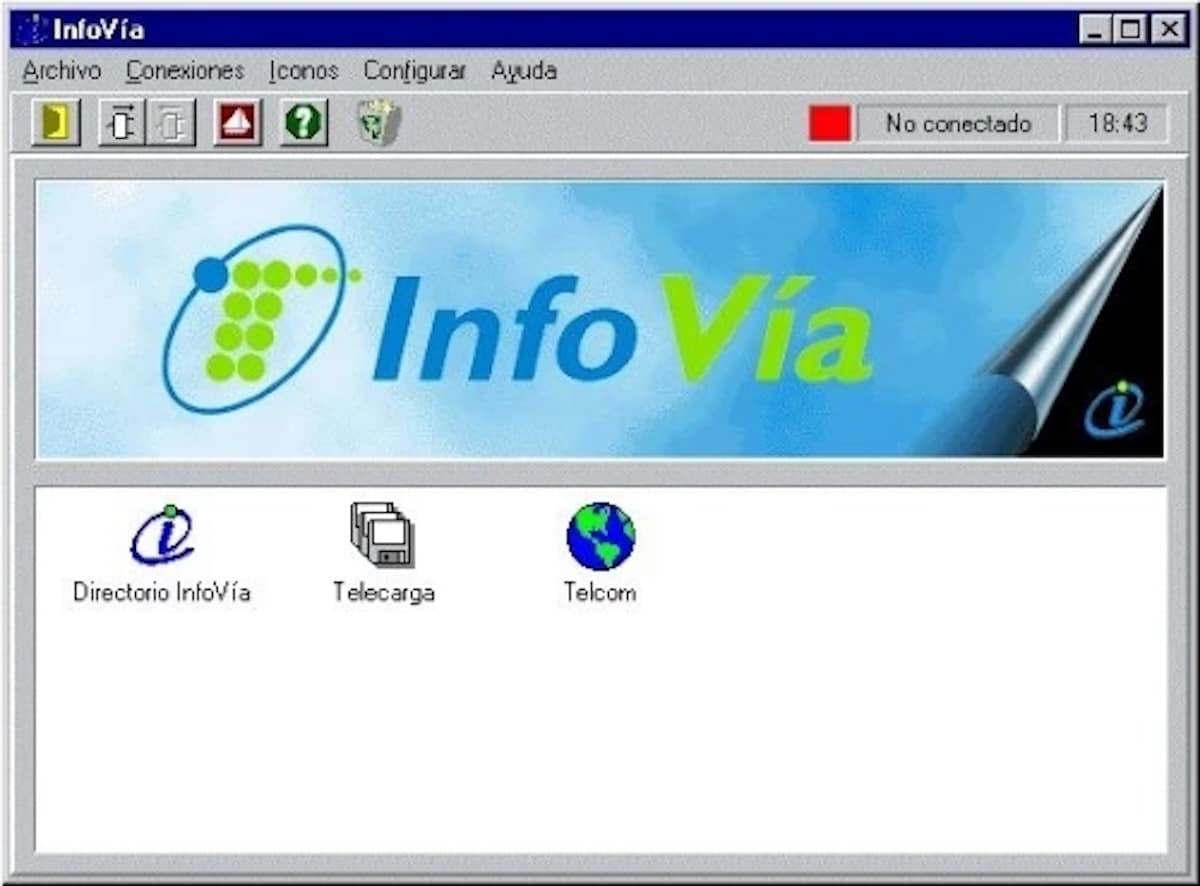Nowadays, Internet connection is as natural as turning on the lights. Whether it’s a 5G smartphone, a Wi-Fi-connected laptop, or a fiber optic computer at 1 Gbps: the network is always available. However, just three decades ago, accessing the Internet in Spain was a process reserved for a few, expensive, and filled with technical obstacles.
Before the arrival of Infovía in 1995, the global network was a privilege reserved for universities, major corporations, and research centers. Individual users connected through alternative services like Fidonet or CompuServe, which arrived in Spain in the early 90s.
Fidonet and the early user networks
In the 80s and early 90s, when the Internet was not yet available to the general public, the most tech-savvy turned to BBS (Bulletin Board Systems). These electronic bulletin boards allowed message, software, and file exchanges via point-to-point telephone connections.
Among them stood out Fidonet, an international network founded in 1984 that connected thousands of BBS across the world. In Spain, Fidonet became a community space where computer enthusiasts could share messages and programs. With a modem and plenty of enthusiasm, users could connect to others; however, transfers were slow and costly.
The cost was a major obstacle: each connection was billed as a local, provincial, or national call. While local calls were reasonably priced, calling another province skyrocketed the rate, turning sessions into a luxury many couldn’t often afford.
CompuServe: Private Internet before the Internet
In the early 90s, CompuServe arrived in Spain, an international platform offering email, forums, databases, and news. While not “Internet” in the current sense, for many users it was their first contact with something similar to the global network.
The issue: high costs. Users paid monthly fees plus additional per-minute charges, at a time when the average salary in Spain made such expenses difficult to justify. Moreover, the interface was in English, limiting adoption to more specialized users.
Restricted access for universities and companies
Meanwhile, universities and large companies were already experimenting with academic Internet. Through networks like RedIRIS (created in 1988), Spain was connected to the digital world, though solely for research and development purposes.
Companies such as banks, newspapers, and multinationals also began to gain access, mainly for corporate email and international databases. But for households, Internet remained a distant dream.
The birth of Infovía: dialing 055
Everything changed in 1995, when Telefónica launched Infovía, a network allowing Internet access from anywhere in Spain with a simple home modem. The system was revolutionary: just dial 055 and you would connect to the access node.
For the first time, it didn’t matter where you lived or which provider you used. Infovía was a kind of “national Internet” linking over 800 providers, which in turn provided access to the global network.
The speed was up to 28,800 bits per second, which may seem laughable today, but at the time, it enabled thousands of Spaniards to discover email, early chats, FTP, Telnet, and browsers like Mosaic or Netscape.
How much did it cost to connect: the price of a local call
The true innovation of Infovía was its billing model. Whereas previously users paid provincial or national rates (much higher), Infovía standardized the cost as a local call:
- 139 pesetas per hour during the day (0.84 €)
- 106 pesetas per hour at night (0.64 €)
Although not cheap, it was infinitely more affordable than previous options, which could cost hundreds of pesetas per hour if the call was interprovincial.
This encouraged thousands of families to connect, many opting to do so during early morning hours when the price was lower and the phone line free.
The modem experience: noise, disconnects, and patience
Connecting to Infovía was a mix of excitement and frustration. The modem emitted beeps, screeches, and metallic whines until, with luck, a connection was established.
The major drawback: if someone picked up the phone, the connection dropped instantly. Browsing and talking were incompatible. This often led to family disputes back in those days.
Additionally, web pages were very basic: HTML text, low-quality images, and some animated GIFs. No videos, streaming music, or social media. Yet, for many, it was a window to the future.
Infovía’s presentation: Bill Gates in Madrid
Telefónica officially launched Infovía in September 1995, coinciding with Bill Gates’s visit to Madrid to promote Windows 95. The goal was clear: boost Internet access by capitalizing on the media attention around the new operating system.
Telefónica’s president at that time, Cándido Velázquez, summarized it as: “this network, born from the combination of computer and telephone, aims to facilitate Spanish users’ access to information highways”.
The initiative worked: within just a year, 100,000 residential users and over 200 providers were connected.
Infovía Plus: transitioning to faster Internet
In January 1999, Telefónica launched Infovía Plus, the natural evolution of the original network. Instead of 055 numbers, it used local numbers spread across Spain. This allowed for more stable connections and less congestion.
The big update was speed: with new V.90 modems, speeds reached 56 kbps, double that of Infovía. Additionally, connection via RDSI at 128 kbps or even mobile GSM networks (though slower) became possible.
Most notably, Infovía Plus paved the way for flat-rate Internet plans, which began to arrive in the late 90s with telecommunications liberalization.
From modem beeps to instant clicks
The advent of technologies like ADSL, fiber optics, and 5G has completely transformed the experience. Today, we can download in seconds what took hours in 1995, or stream videos that were once unimaginable.
However, Infovía was the turning point. Before it, Internet was for elites and early adopters willing to spend fortunes on CompuServe or interprovincial calls. Afterward, it became an accessible service for thousands of households.
Frequently Asked Questions
1. What was Fidonet and how did it work?
Fidonet was an international BBS network that allowed users to exchange messages and files via modem. It was very popular in Spain before Infovía.
2. What was the difference between CompuServe and Infovía?
CompuServe was a private, subscription-based service that was expensive, while Infovía was a national network led by Telefónica that provided Internet access at the cost of a local call.
3. How much did it cost to connect to Infovía?
It was 139 pesetas per hour during the day (0.84 €) and 106 pesetas at night (0.64 €). Interprovincial calls could significantly increase this cost.
4. What improvements did Infovía Plus bring?
Launched in 1999, Infovía Plus reached speeds up to 56 kbps, introduced local nodes across Spain, and paved the way for flat-rate Internet plans.
Sources: History of Infovía, Wikipedia


